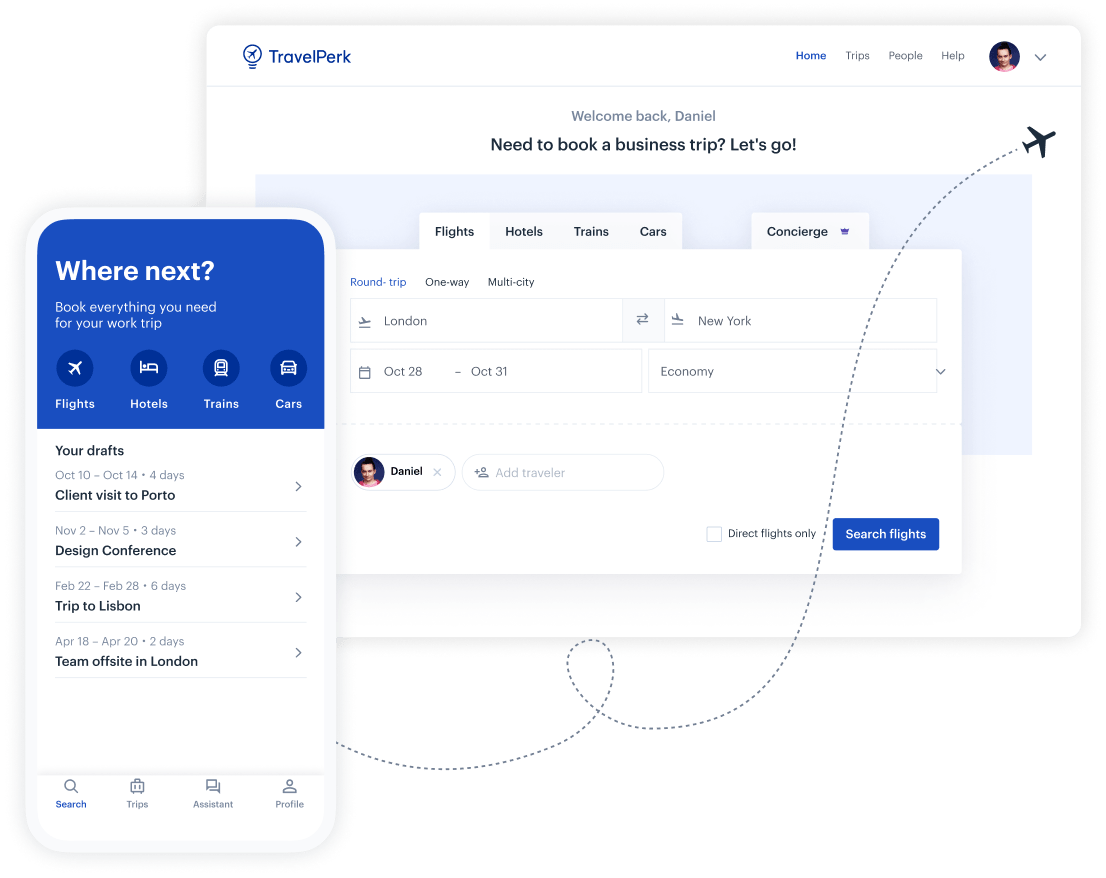Woohoo! Workcation! Here at TravelPerk, we’re all about blending worlds together if it means you get to have more fun. If you’re the person organizing this upcoming workcation (AKA company retreat) then you might be feeling stressed instead of excited.
Company retreats are invaluable experiences in culture-building, brainstorming, and relaxed innovation. Startups report increased camaraderie, communication, and productivity during their retreats.
If the duty of planning the company retreat has fallen on your shoulders, not to worry. You can handle this!
You will get everyone there safely, feed them delicious food, and facilitate team building. With these planning guidelines, it’s in the bag. Here’s how to plan a retreat.
Lock in the dates
Just like when you’re planning a wedding, once you set the date everything else will fall into place.
But instead of coordinating around your favorite aunt’s vacations, you’ll be coordinating with perhaps dozens of employees and their many life events.
The farther in advance you set the date, the better. The more people on your team, the farther in advance you need to set the date. For a team of ten, it might not be that hard to set a date 2 months out. But if you’re coordinating with a hundred or more people, you’ll want to set the date anywhere from 6 months to a year in advance.
Here are some important steps:
- Choose the length (typically between 2 and 7 days)
- Choose 3 different options
- Create a spreadsheet or a form where everyone can share which date options don't work for them
- Choose the option that the least amount of people can’t attend
- As soon as the dates are set, announce them so everyone can block out their calendars
Of course you want as many people to attend as possible, but the fact is that some people won’t be able to attend, due to personal reasons.
Planning a team retreat or company offsite soon? Download our free offsite agenda template to make sure you hit the ground running.
Choose the location
Once the dates are set, it’s time to pick the location. Here are the factors you need to consider:
- Weather (does the team want to go somewhere warmer or cooler?)
- Ease/length of travel
- Whether or not travel visas will be required for some/all team mates
- Quality of wifi in most lodgings and cafes
You’ll also want to have clear guidelines on the inclusion of significant others and kids. For short, nearby retreats, it’s acceptable to request that employees not invite their significant others. But for long retreats that are far away, many employees would rather include their significant others and/or children. When choosing a location, you’ll need to consider the availability of alternative lodging in case team members do invite their loved ones. A city will have more options for significant others to book lodging nearby than a remote wilderness area, for example.
“My top tip would be to set the main theme and expectations for the retreat, then secure the venue early.”
Josepha Miltony, Executive Administrative Manager at Testlio
Book flights and lodging
You’ve set the dates. You’ve chosen the location. Now what?
Now it’s time to bury your head in a pillow and cry. It’s stressful to book flights and hotels for 200 people. Just kidding. Please don’t cry.
TravelPerk will handle this process for you if you’re on our Premium plan. We’ll book the flights and hotels for your ENTIRE TEAM. Because that’s so exciting, please forgive the use of all caps.
If you’d rather handle this yourself, you should call lodging sources directly to make sure they can accommodate such a large group in one place. As for flights, remember that purchasing in advance is the best way to save money, so get on it! For team members coming from a different time zone, consider allowing them to arrive early so they can adjust to the time zone before the event begins.
Looking for a simple way to stick to your retreat budget? We’ve done the hard work for you! Download our free event budget template.
Determine one or two core goals for the retreat
For remote, distributed teams, what’s most important is interactions and conversations.
For teams with multiple offices, what’s most important is increasing knowledge share and communication between the locations and increasing commardarie.
For teams working together in one office, the most important thing is fun.
What’s your company’s goal for this retreat? Before you start planning the daily activities, make sure that the company is very clear on the main purpose of the event, and the planning will be so much easier (and more successful).
Plan activities around those goals
Many companies consider a retreat to be “one part reward, one part brainstorming marathon.” If that’s true for you, then you’ll want to schedule plenty of time for fun activities as well as comfortable brainstorming sessions and scrums.
Bringing people together
If the core purpose of the retreat is culture building and getting to know one another, then plan hikes, physical activities, tours, and delicious dinners.
Fostering innovation
To ignite creative genius in your team, book time in coworking centers where team members can have 1:1 chats about problems they’re trying to solve.
Increasing communication
If you want to remove barriers and clean up inconsistencies in communication, then try structured team-building activities, like having everyone share their vision for the company or reflect on what they learned last year.
Bake in relaxation and rejuvenation time
This is so important! Extroverts are people who gain energy from being around others. Introverts are people who feel drained from spending time with others. Everyone on your team has different requirements for time spent alone versus time spent with others.
If you overbook the retreat, you’ll exhaust your introverts. Instead, bake in “free time” that allows employees to retreat to their room or venture out if they wish.
During the retreat, don’t sweat the small the stuff
Warning: something will go wrong.
You’ll forget to plan for breakfasts, or the restaurant where you host the kickoff dinner won’t serve vegan options, or someone will make fun of the team-building exercises you planned.
Once the retreat has begun, don’t stress over every little detail and remember to enjoy yourself. As the planner, the energy that you bring will set the tone for the event. Always keep the core goals in mind, and satisfy those goals over your need for perfection.
After the retreat, get feedback for the next one
Once everyone is home from the retreat, ask for feedback. Ask team members to shoot you an email with what they liked, what they didn’t like, and what they want to be different for the next retreat.
Over time, you’ll become a master of what works for your individual team, whether that’s chasing an adrenaline high on the last day of the retreat or going to the same cabin every year to create a tradition.
With group booking handled for you, TravelPerk makes company retreat planning super smooth. Learn more about group bookings here!

Make business travel simpler. Forever.
-
See our platform in action. Trusted by thousands of companies worldwide, TravelPerk makes business travel simpler to manage with more flexibility, full control of spending with easy reporting, and options to offset your carbon footprint.
-
Find hundreds of resources on all things business travel, from tips on traveling more sustainably, to advice on setting up a business travel policy, and managing your expenses. Our latest e-books and blog posts have you covered.
-
Never miss another update. Stay in touch with us on social for the latest product releases, upcoming events, and articles fresh off the press.



